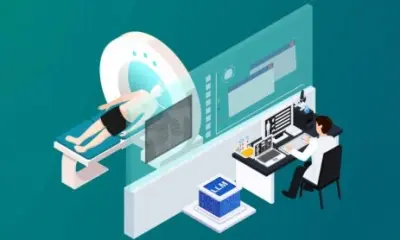© metamorworks - stock.adobe.com
News • Sustainable use of generative AI
Large language models in healthcare: shorter prompts, less emissions?
Hospitals must use artificial intelligence responsibly to avoid huge carbon emissions, new research has shown.
A new study investigating the impact of artificial intelligence (AI) in healthcare has shown that using large language models (LLMs) to process thousands of patient records daily across multiple hospitals could lead to substantial resource consumption. Published in Internal Medicine Journal, researchers from the University of Adelaide and the University of Reading highlight ways in which hospitals can use AI responsibly - including using shorter prompts to summarise patient data.
ChatGPT is estimated to use 15 times as much energy as Google. Implementing large language models across healthcare could have very significant environmental consequences
Oliver Kleinig
Oliver Kleinig, who led the research from the University of Adelaide, said: “Every day you are in hospital, doctors, nurses, and other hospital professionals are documenting pages and pages about your health. By the end of a hospital stay, it is possible to accumulate tens of thousands of words to your name. Unlike busy healthcare staff, private large language models similar to ChatGPT have time to read through and process this information. However, with great processing power comes great responsibility. A single AI query uses enough electricity to charge a smartphone 11 times and consumes 20 millilitres of freshwater in Australian data centres. ChatGPT is estimated to use 15 times as much energy as Google. Implementing large language models across healthcare could have very significant environmental consequences. Hospital bosses need to think carefully about where and when artificial intelligence should be used in their organisations.”
ChatGPT's daily carbon emissions already equal that of 400-800 US households. Healthcare AI systems would likely have an even larger footprint, as they require more powerful models to handle complex medical information and must be run locally for patient privacy. Beyond energy consumption, the hardware needed for these AI systems requires extensive rare earth metal mining, potentially causing habitat destruction. The manufacturing process alone can double the carbon footprint of AI operations.
To reduce the impact of hospitals and medical centres on the environment, the researchers propose five key questions healthcare providers should consider before implementing AI systems, including:
- Does my organisation need a large language model? Could existing technology be sufficient?
- What LLM should I choose? Use the smallest possible model to decrease resource consumption - smaller, fine-tuned LLMs can outperform larger applications.
- How can I optimise my LLM? Use smaller and specific prompts to reduce the carbon impact of applications. Succinct prompts with refined information are more energy efficient.
- What hardware should I run my LLM from? Using hardware that runs on renewable energy is preferable.
- What data should I share? Maximise LLM efficiency by sharing data where appropriate.
The study suggests AI could potentially reduce healthcare's environmental impact in other ways, such as improving patient flow and reducing paper use.
Source: University of Reading
19.11.2024










